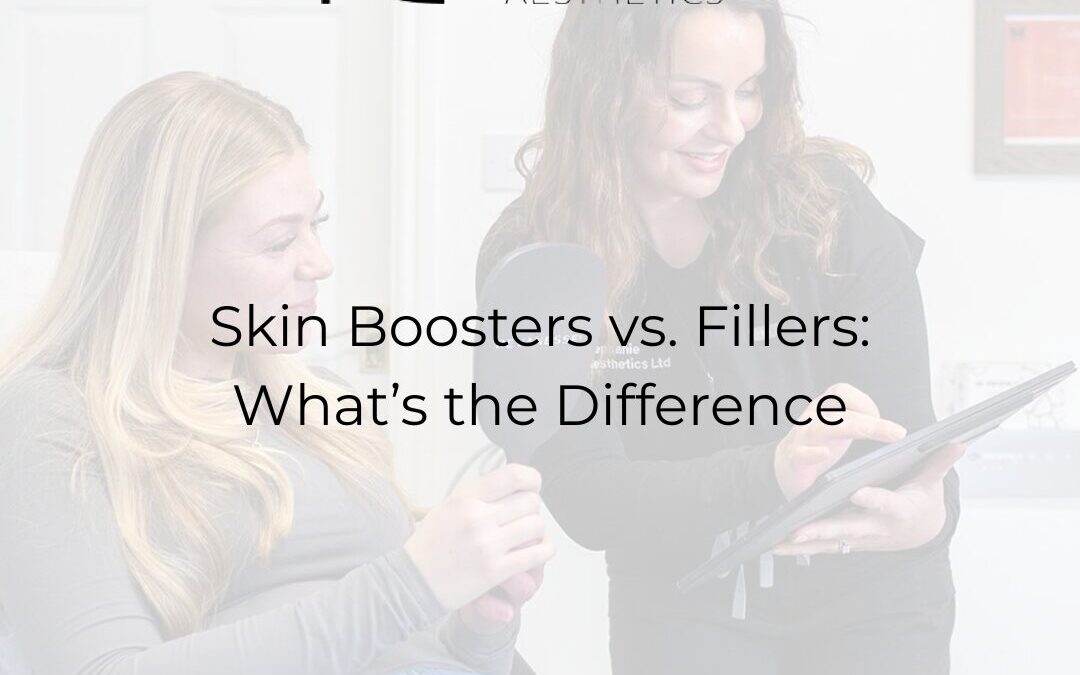When it comes to achieving youthful, radiant skin, the beauty and dermatology industries have developed several innovative treatments. Among them, skin boosters and dermal fillers have gained massive popularity for their effectiveness in rejuvenating the skin. While they might seem similar at first glance, these treatments work very differently and target distinct concerns. Understanding the difference between skin boosters and fillers can help you make an informed decision about which treatment is right for you.
What Are Skin Boosters?
Skin boosters are injectable treatments designed to improve the overall quality and hydration of your skin. Unlike fillers, which primarily add volume, skin boosters focus on enhancing the skin’s texture, elasticity, and glow. They are composed of hyaluronic acid (HA)—a substance naturally found in our skin that holds water and keeps it hydrated.
When injected, skin boosters work from within by delivering hydration to deeper dermal layers, improving skin smoothness and reducing fine lines. They are particularly effective for combating dullness, dehydration, and skin damage caused by aging or sun exposure. Skin boosters are ideal for areas like the face, neck, décolletage, and hands, which often show early signs of aging.
The results of skin boosters are natural-looking and subtle, typically improving over several weeks as the skin absorbs the hydrating effects. Skin boosters are an excellent choice for those who want to enhance their complexion without changing their facial contours.
What Are Dermal Fillers?
Dermal fillers, on the other hand, are designed to restore lost volume, enhance facial contours, and reduce the appearance of wrinkles. They are also made from hyaluronic acid or other substances like calcium hydroxylapatite and poly-L-lactic acid, but their primary purpose is to add structure and definition to the face.
Fillers are often used to target specific areas, such as cheeks, lips, jawline, and under the eyes, to replenish volume that diminishes with age. They can contour and lift the face, smooth out deep folds, and create a youthful appearance. Unlike skin boosters, fillers provide immediate results, and the treated areas will appear fuller and more defined right after the procedure.
The effects of fillers are typically more noticeable than those of skin boosters, making them a popular choice for those looking for a more dramatic transformation. Depending on the type of filler and the treatment area, the results can last from six months to two years.
Understanding the Key Differences
While both skin boosters and fillers involve injectable treatments, their purposes and effects are quite different. Skin boosters focus on improving skin quality by providing deep hydration and nourishment. Meanwhile, fillers are aimed at restoring volume, enhancing contours, and smoothing out static wrinkles.
Choosing between these treatments depends on your skin concerns and aesthetic goals. For individuals seeking a subtle glow and improved skin texture, skin boosters might be the way to go. However, if adding volume or defining features is your priority, dermal fillers are better suited to your needs. It’s worth noting that these treatments can also complement each other, creating a comprehensive approach to skin rejuvenation.
Final Thoughts
Both skin boosters and fillers are excellent options for addressing different facets of aging and achieving radiant, younger-looking skin. Consulting with a certified dermatologist or aesthetic practitioner can help determine the treatment plan that suits your skin type, goals, and lifestyle. Understanding the unique benefits of each option empowers you to make the best choice for your beauty and confidence.



